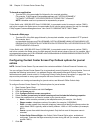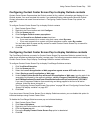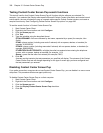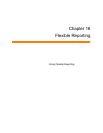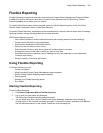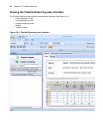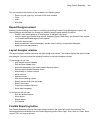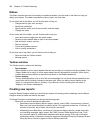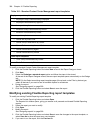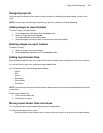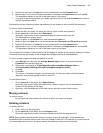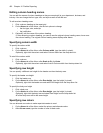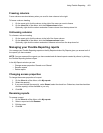396 Chapter 16 Flexible Reporting
Ribbon
The ribbon provides the same functionality as traditional toolbars. Use the tools on the ribbon to help you
design your reports. The ribbon comprises the Home, Insert, and View tabs.
On the Home tab of the ribbon, you will find the tools to help you
• Change the font type, size, and style
• Select text justification
• Specify column width, auto-fit column width, and row height
• Change row colors
On the Insert tab of the ribbon, you will find the tools to help you
• Insert and remove images from the report header
• Select the report header titles to open in the report header
• Add existing or custom columns
• Remove columns
• Freeze and unfreeze columns
• View or modify expressions
On the View tab of the ribbon, you will find the tools to help you
• Show and hide the Toolbox window
• Manage reports
Toolbox window
The Toolbox window contains the following:
• Report header
Report header is a list of report header titles that are currently not included in the report header. If the
Report Header list is empty, all of the report header titles will be applied to the report. When report
header titles are removed from a report they are shown in the Report headers list.
• Column heading
Column heading displays a list of all of the column headings (for only those devices selected for the
report) that are not currently included in the report grid. When you add a column heading to the
report, it is removed from the list. Similarly, if you remove a column heading from the report, it
displays in the Column headings list.
Creating new reports
Using the Report Designer wizard you can build new reports with existing column headings. Use the Report
Designer wizard to select the data for the report.
The Report Designer wizard guides you through the following steps:
• Select how you want to display the report data
• Performance reports display data for agents, queues, trunks, DNIS, or extensions by interval.
Each row in the report represents a specific period. The supported periods are: 15 minutes, 30
minutes, 60 minutes, day of week, day of month, and month.
• Answering points, Make Busy, and Account Code reports display data for a single device per
row (including employee, agent, queue, ANI, DNIS, Account Code, Make Busy code, Trunk
busy minutes, agent ID, and devices associated with device groups). Each row in the report
represents a device. Examples of by device reports are Employee Group by Employee, Queue
Group by Queue, Queue by Agent, or Queue ANI by Area Code.



